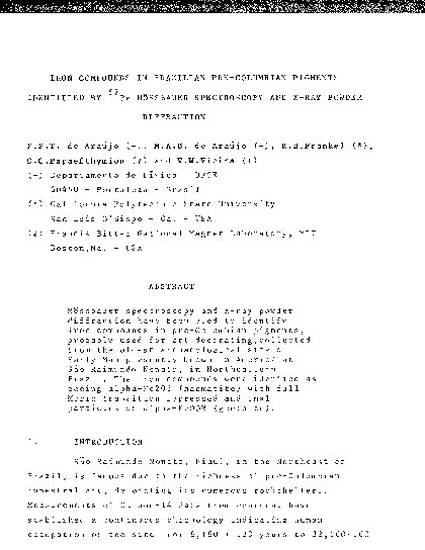
Contribution to Book
Iron Compounds in Brazilian Pre-Columbian Pigments Identified by 57Fe Mossbauer Spectroscopy and X-Ray Powder Diffraction
Applications of the Mossbauer Effect
Publication Date
1-1-1990
Abstract
Mossbauer spectroscopy and X-ray powder diffraction have been used to identify iron compounds in pre-Columbian pigments, probably used for art decorating, collected from the oldest archaeological site of Early Man presently known in American at Sao Raimundo Nonato, in Northeastern Brazil. The iron compounds were identified as being alpha-Fe203 (haematite) with full Morin transition supressed and small particles of alpha-FeOOH (goethite).
Disciplines
Copyright
1990 Springer.
Publisher statement
The original publication is available at http://www.springer.com.
Citation Information
F. F.T. de Araujo, M. A.B. de Araujo, R. B. Frankel, G. C. Papaefthymiou, et al.. "Iron Compounds in Brazilian Pre-Columbian Pigments Identified by 57Fe Mossbauer Spectroscopy and X-Ray Powder Diffraction" Applications of the Mossbauer Effect (1990) p. 359 - 363 Available at: http://works.bepress.com/rfrankel/174/
